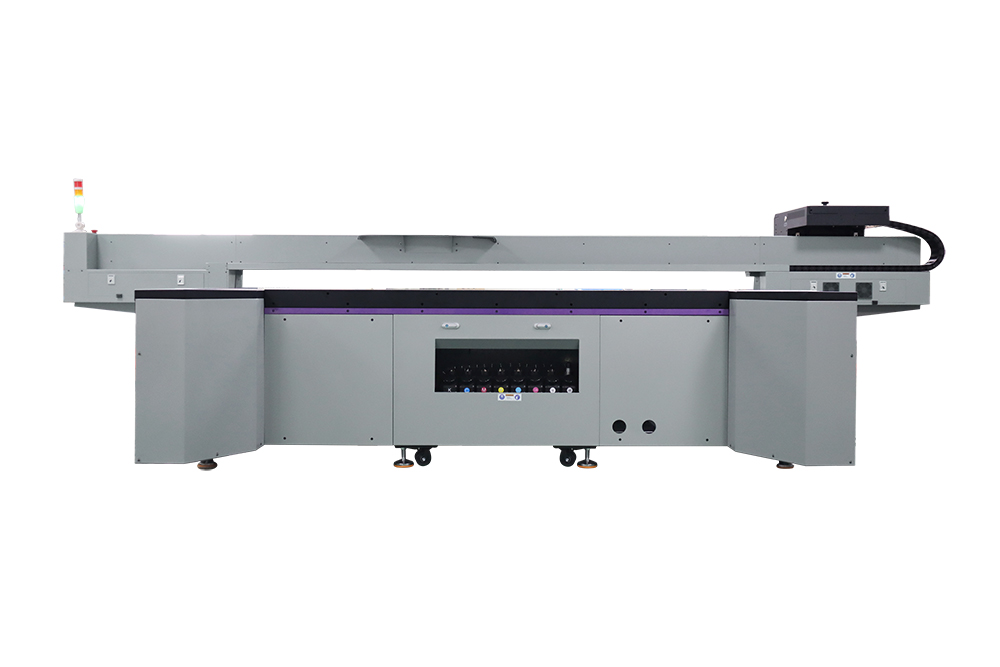Technical Considerations for Printing on Acrylic With a UV Flatbed Printer
Technical Considerations for Printing on Acrylic With a UV Flatbed Printer
Printing on acrylic using a UV flatbed printer presents a unique set of challenges and opportunities for businesses seeking to create high-quality, durable, and visually appealing graphics. The process involves depositing UV-curable ink onto the surface of acrylic sheets, which are then cured instantly by UV light. This technology allows for precise, vibrant, and long-lasting prints that can withstand exposure to various environmental conditions. However, achieving optimal results requires careful consideration of several technical factors, including material selection, ink compatibility, printer settings, and post-processing techniques. This article explores these considerations in detail.

Material Selection
The first step in successfully printing on acrylic with a UV flatbed printer is choosing the right type of acrylic sheet. Acrylic, also known as polymethyl methacrylate (PMMA), is available in different grades and thicknesses, each with its own set of characteristics that can affect the printing process and the final output.
Grade of Acrylic: Optical-grade acrylic is preferred for printing due to its high clarity and smooth surface, which enhances ink adhesion and color vibrancy. Cast acrylic is another popular choice, offering better chemical resistance and weatherability compared to extruded acrylic.
Thickness: The thickness of the acrylic sheet can impact the printing process, with thicker sheets providing better rigidity but potentially requiring adjustments to the printer’s settings for proper ink deposition and curing. Common thicknesses for printing range from 1/8″ to 1/2″, depending on the application.
Surface Treatment: Some acrylic sheets come with a pre-applied mask or protective film on one or both sides. This film must be removed before printing to ensure proper ink adhesion. Additionally, cleaning the acrylic surface with isopropyl alcohol prior to printing can further enhance ink adhesion and print quality.
Ink Compatibility
The choice of ink is crucial when printing on acrylic with a UV flatbed printer. UV-curable inks are specifically designed to cure when exposed to UV light, creating a hard, durable finish that is resistant to fading, scratching, and chemical degradation.
Ink Viscosity: The viscosity of the ink must be carefully managed to ensure proper flow through the printer’s nozzles and optimal adhesion to the acrylic surface. Inks that are too thick may result in poor ink flow and clogged nozzles, while inks that are too thin can lead to bleeding or poor opacity.
Color Gamut: UV-curable inks offer a wide color gamut, allowing for vibrant and accurate color reproduction. However, it’s important to choose inks that are specifically formulated for acrylic substrates to ensure optimal adhesion and durability.
Curing Properties: The curing speed and depth of UV-curable inks can vary, impacting the overall print quality and production efficiency. Faster-curing inks can reduce print times, but it’s essential to ensure that the ink is fully cured to achieve the desired durability.
Printer Settings
Optimizing the printer settings is critical to achieving high-quality prints on acrylic. This includes adjusting the print resolution, ink deposition rates, and UV lamp intensity.
Print Resolution: Higher print resolutions result in sharper, more detailed prints. However, increasing the resolution also increases the print time and may require adjustments to the ink deposition rates to maintain optimal ink coverage.
Ink Deposition Rates: The amount of ink deposited on the acrylic surface can affect both the print quality and the curing process. Too much ink can lead to pooling or bleeding, while too little ink can result in poor opacity or adhesion. Finding the right balance is key to achieving optimal results.
UV Lamp Intensity: The intensity of the UV lamps used to cure the ink can impact the curing speed and the final print quality. Higher intensities can cure the ink faster but may also increase the risk of overheating the acrylic, which can lead to warping or cracking. It’s important to find the right balance between curing speed and material integrity.
Post-Processing Techniques
After the printing and curing process, there are several post-processing steps that can further enhance the appearance and durability of the printed acrylic.
Cleaning: Removing any residual ink or debris from the printed surface can improve the overall appearance of the print. This can be done using a soft cloth or a mild cleaning solution.
Applying a Protective Coating: Applying a UV-curable protective coating over the printed surface can provide additional resistance to fading, scratching, and chemical degradation. This can be particularly beneficial for prints that will be exposed to harsh environmental conditions.
Cutting and Finishing: Depending on the application, the printed acrylic may need to be cut to size or shaped using a router or CNC machine. It’s important to ensure that the cutting process does not damage the printed surface or compromise the integrity of the acrylic.
Conclusion
Printing on acrylic with a UV flatbed printer offers a versatile and efficient way to create high-quality, durable graphics for a wide range of applications. However, achieving optimal results requires careful consideration of several technical factors, including material selection, ink compatibility, printer settings, and post-processing techniques. By understanding and addressing these considerations, businesses can unlock the full potential of UV flatbed printing on acrylic and deliver exceptional printed products to their customers.
